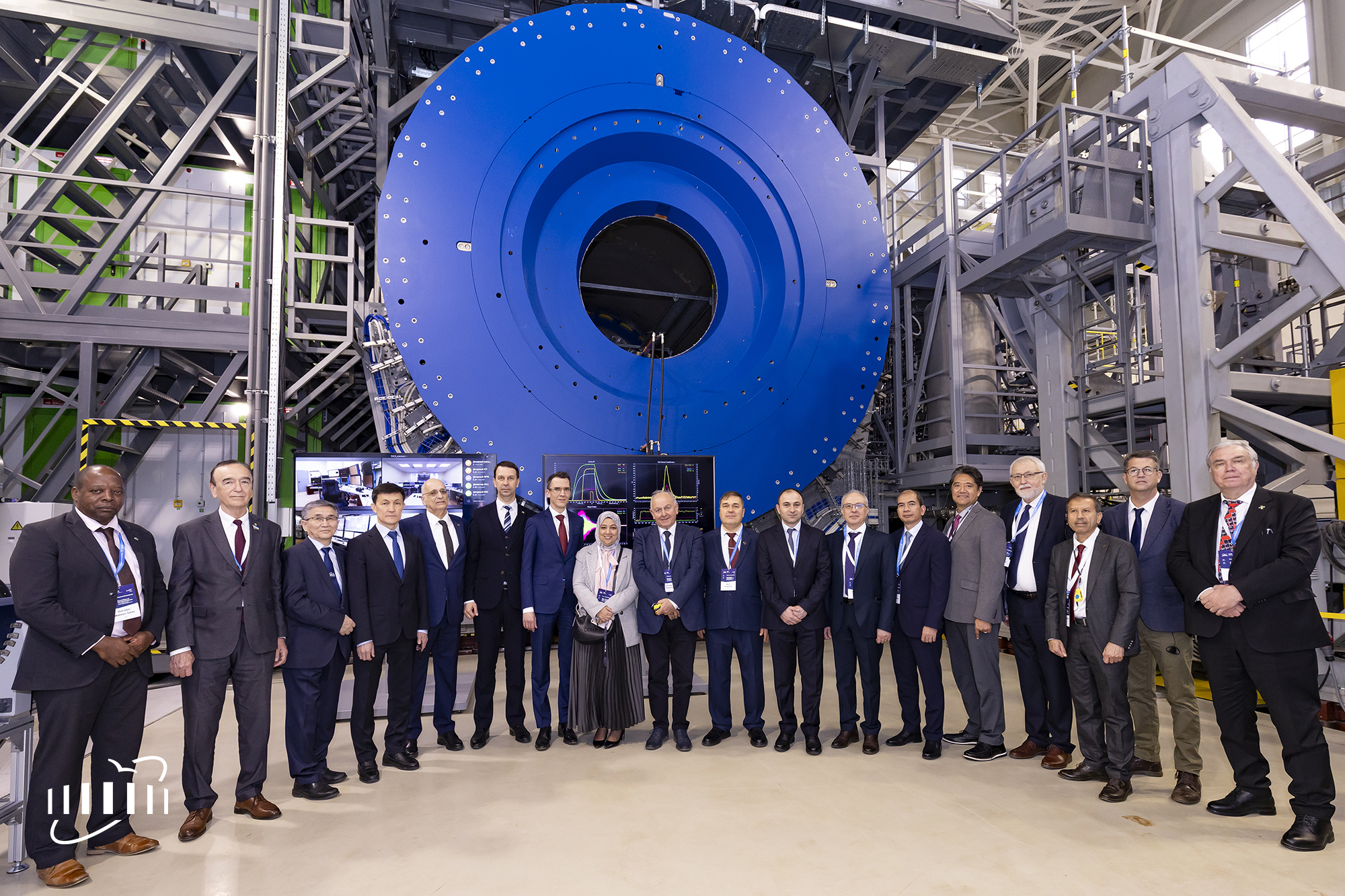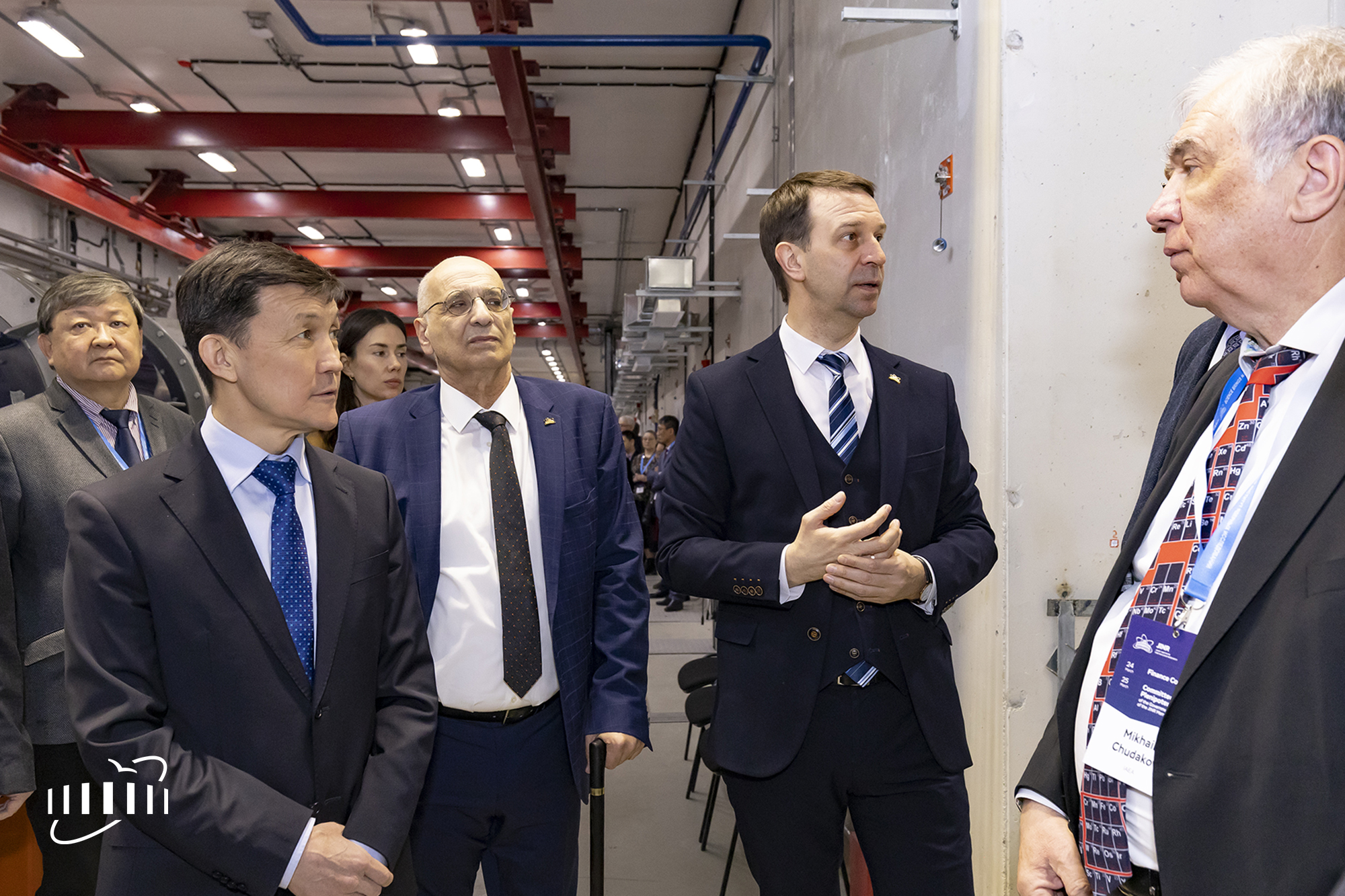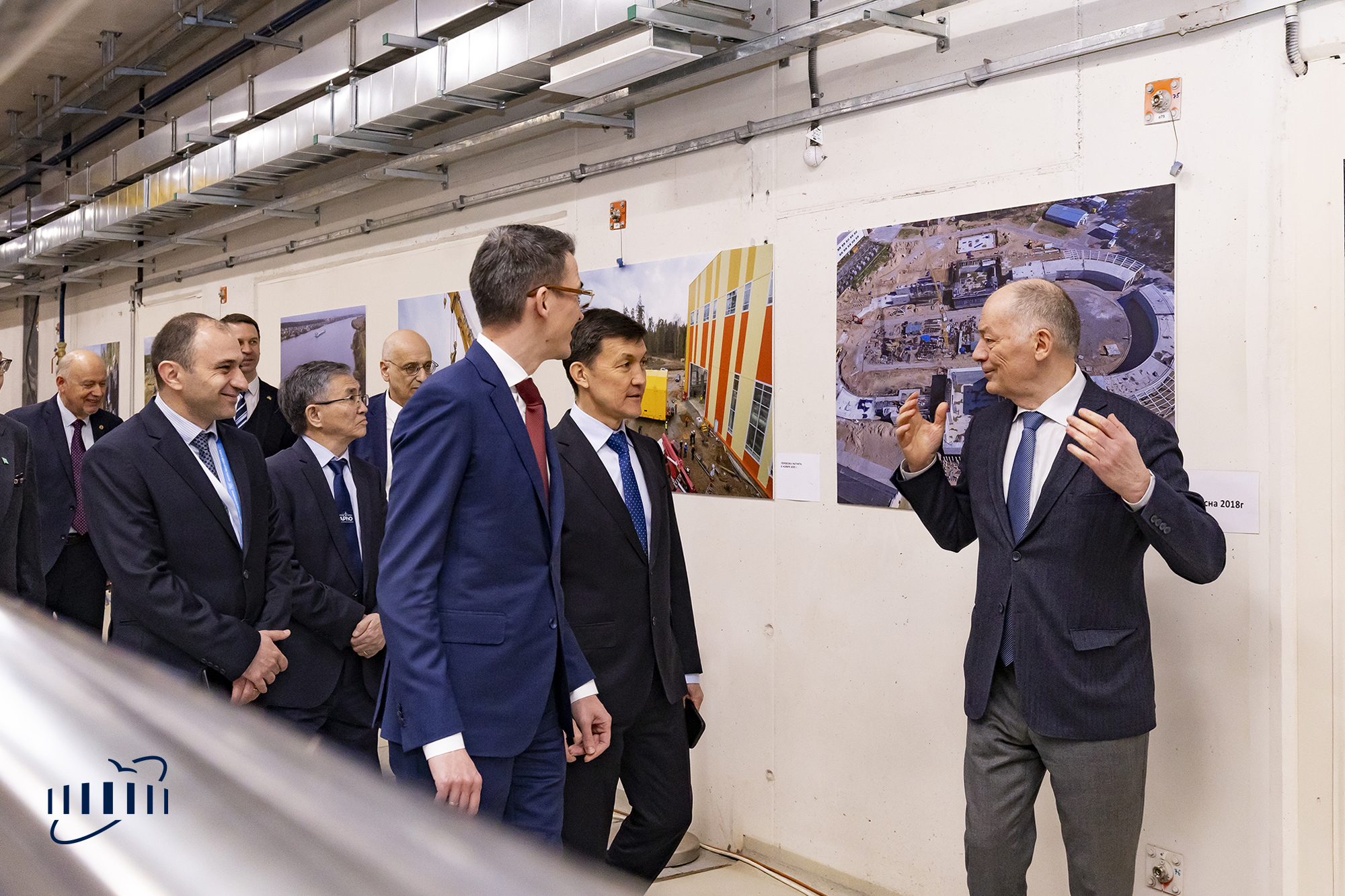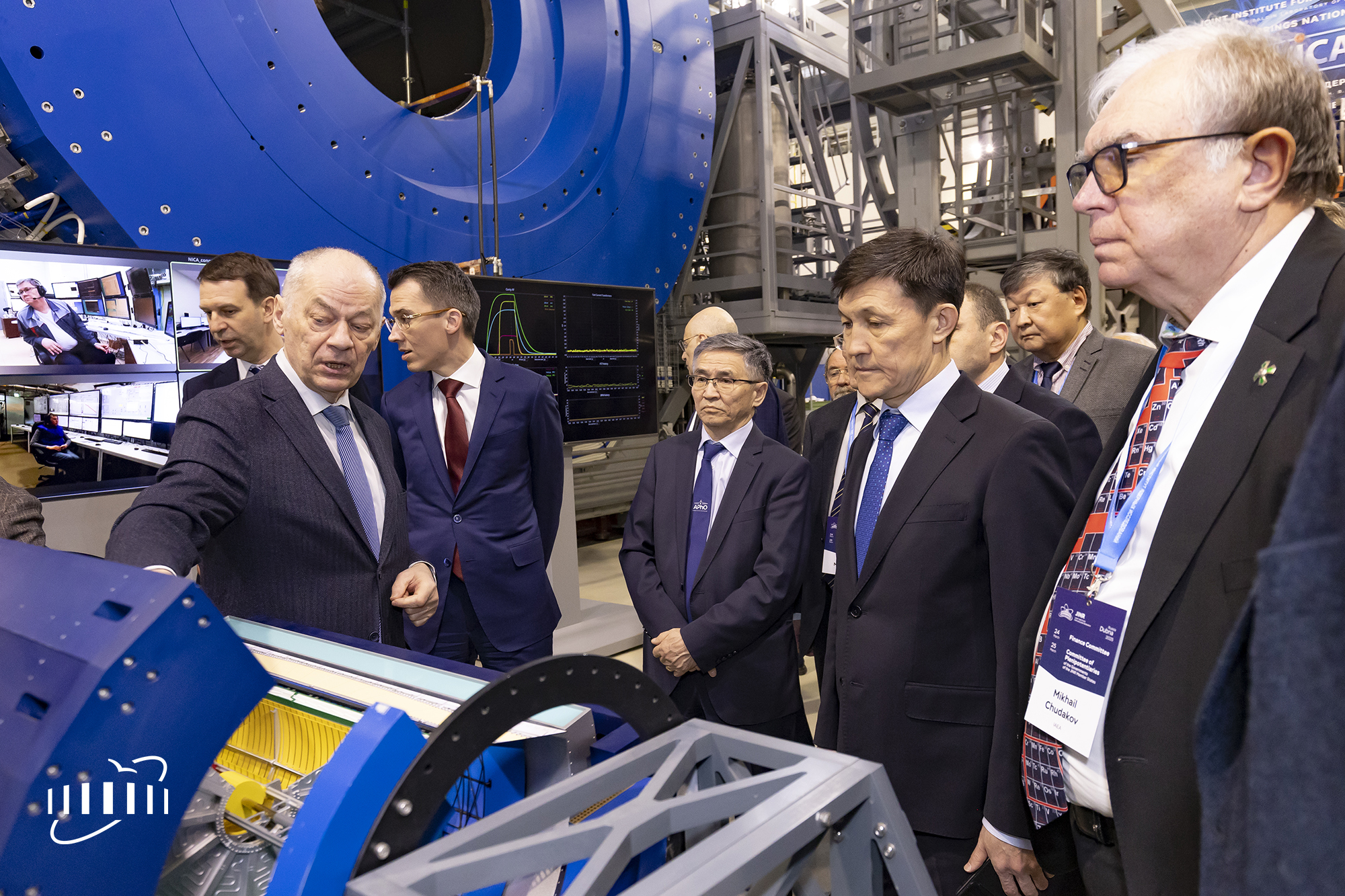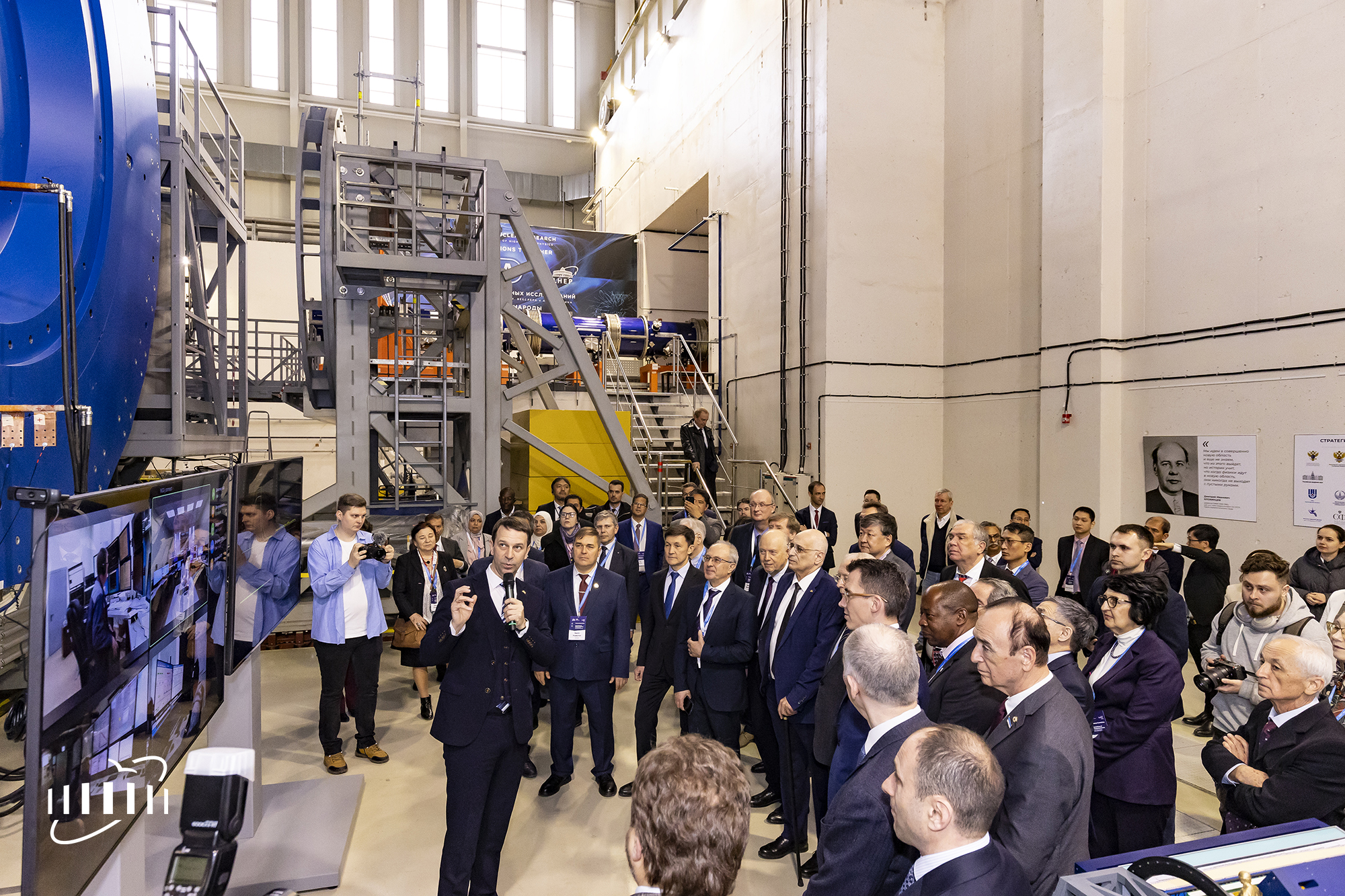First run at NICA Accelerator Complex
Media, 27 March 2025
On 25 March 2025, run 1 at the NICA Accelerator Complex was initiated at the Laboratory of High Energy Physics at the Joint Institute for Nuclear Research. The ceremony took place alongside a session of the Committee of Plenipotentiaries of the Governments of the JINR Member States in the presence of representatives of 20 Member and Associate Member States as well as partners of the Joint Institute.
“Today marks a very significant and symbolic moment for the Joint Institute for Nuclear Research. We have finished a 19-year journey. In the near future, we anticipate data from the first physics experiments – colliding beams on the screens in the control room. I think that it will happen this summer, in July–August,” JINR Director, Academician of the Russian Academy of Sciences Grigory Trubnikov stressed.
The event took place in the MPD experimental hall in a hybrid format, as the main control room of the accelerator complex, from where all NICA’s technological systems and accelerators are remotely controlled, is located half a kilometre from the MPD building. VBLHEP JINR Acting Director Andrey Butenko, CP JINR Chair Arsen Khvedelidze, and Deputy Minister of Science and Higher Education of the Russian Federation Andrey Omelchuk, together with Grigory Trubnikov, shared the honour to give the command to start. After the dispatcher in the control room confirmed that all systems of the complex are ready, the cold gas started to fill the accelerators, and a beam of xenon ions, with a beam current of about 300 microamperes, was injected.
The first run at NICA will last for about six months and end with the collision of xenon beams at their interaction point in the MPD hall. During the run, the KRION-6T Ion Source, linear accelerator, Booster, Nuclotron, and the BM@N Facility will be involved stepwise. The specialists will cool the magnets, adjust the channels of beam transport and injection into the collider, and then the beams will circulate. About 700 employees are involved in the run.
As Andrey Butenko explained, most of the run will be devoted to preparing for the physics run at the collider. “We need to prepare and test all the systems up to the system of beam injection into the collider rings in order to start working with the beam in the collider itself. This is a great amount of work, set to take up 3 to 4 months, considering that the adjustment is related to novel operating modes of the complex’s accelerators and beam transportation channels,” VBLHEP JINR Acting Director commented.
In parallel with the configuration of the rest of the complex at the collider, the technological run of various systems will continue until the end of June. The technological run’s result will be the collider’s readiness for a technical run in July and then for a physics run using a beam in August–September.
JINR Vice-Director Vladimir Kekelidze said that, according to the first run’s plan, the beams will begin to circulate in the ring of the NICA Collider in August, and the specialists will begin measuring their parameters. Once the accelerator complex functions stably, and the beam parameters are adjusted to certain values, the multifunctional MPD Detector weighing more than 1000 tons will be installed in the beamline, and full-scale research will begin as part of the NICA scientific programme. Over one and a half thousand participants from more than 15 countries already joined these studies. The involvement of scientists from Russian research centres was supported by targeted grants from the Ministry of Science and Higher Education of the Russian Federation.
In June 2024, Russian President Vladimir Putin initiated the technological run of the NICA Complex, that is the sequential launch and testing of all its systems. For 9 months, the project participants tested the operation of power sources for superconducting collider magnets, cryogenic and magnet cryostat systems, protection against superconducting transitions and energy evacuation, vacuum systems, automation systems, data collection and transmission from detector elements to distributed computer centres, and much more. This lengthy process culminated in preparations for the first run at the NICA Accelerator Complex, i. e. the start of regular operation of the complex and the conduct of planned research on it.
